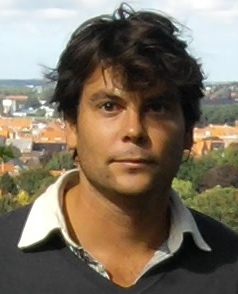
Doctor in Signal Processing
Curriculum Vitae (in french) - Ph.D. Thesis (in french)

International journal papers:
P. Comon, X. Luciani and A.L.F de Almeida, Tensor Decompositions, Alternating Least Squares and other Tales, Journal of Chemometrics, Volume 23, Aug. 2009, Pages 393–405.
X. Luciani, S. Mounier, H.H.M. Paraquetti, R. Redon, Y. Lucas, A. Bois, L.D. Lacerda, M. Raynau and M. Ripert, Tracing of dissolved organic matter from the SEPETIBA Bay (Brazil) by PARAFAC analysis of total luminescence matrice, Marine Environmental Research, Volume 65, Issue 2, March 2008, Pages 148-157.
International conference papers.
A.L.F de Almeida, X. Luciani and P. Comon, Fourth-order confac decomposition approach for blind mimo system identification based on the characteristic function. EUSIPCO 2012.
X. Luciani and L. Albera, Joint Eigenvalue Decomposition using Polar Matrix Factorization. LVA/ICA 2010.
A.L.F
de Almeida, P. Comon, X. Luciani. Deterministic
Blind Separation of Sources Having Different Symbol Rates Using
Tensor-Based Parallel Deflation. LVA/ICA
2010.
X. Luciani, A. L. F. de Almeida and P. Comon, Blind identification of underdetermined mixtures of complex sources based on the characteristic function. EUSIPCO 2010.
A.L.F de Almeida, X. Luciani, P. Comon, Blind Identification of Underdetermined Mixtures Based on the Hexacovariance and Higher-Order Cyclostationarity. In: IEEE Workshop on Statistical Signal Processing, 2009, Cardiff. Proceedings of IEEE SSP 2009, v. 1. p. 1-4.
X. Luciani, L. Patrone and P. Courmontagne, Nano-domains segmentation on AFM images, Journal de Physique IV, vol. 132, p. 237, 2006.
Workshops:
X.
Luciani et L. Albera, Décomposition CP par diagonalisation
conjointe : Algorithmes et applications à la spectroscopie de
fluorescence. Journée « Décompositions tensorielles et
applications » du GDR ISIS, 16/01/2013.
X. Luciani, A.L.F de Almeida, P. Comon, Blind Identification using tensor block decomposition and Characteristic Function modeling. Trilateral workshop on Separation of Variables and Applications (SVA 2010).